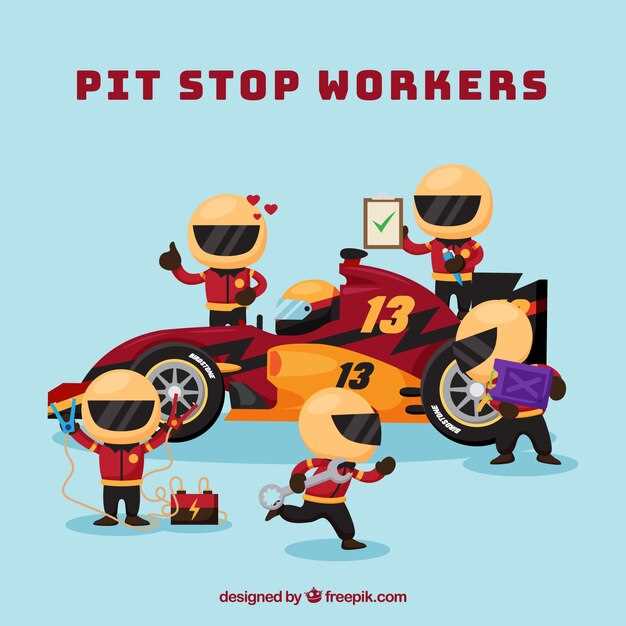
For amateur racers, maximizing vehicle performance on the track is essential to enhance lap times and overall driving experience. Whether you’re a weekend warrior or aspiring to climb the ranks in local competitions, the right upgrades can make a significant difference. This article delves into the top performance upgrades that can transform your racing machine, helping you achieve the speed and agility necessary to compete effectively.
Racing demands not only skill but also a vehicle that can handle the unique challenges of the track. From improving acceleration to enhancing cornering stability, each upgrade contributes to a more competitive edge. By investing in specific modifications, amateur racers can unlock their car’s full potential and elevate their performance, making every lap more thrilling and rewarding.
In the following sections, we will explore the most effective upgrades available for amateur racers. Each recommendation is backed by expert insights and practical tips, ensuring you make informed decisions tailored to your racing goals. Embrace the spirit of competition, and let’s discover how to unleash your vehicle’s capabilities on the track.
Improving Suspension Geometry for Better Handling
One of the most crucial upgrades for amateur racers seeking improved performance on the track is enhancing suspension geometry. Proper suspension geometry plays a vital role in the handling characteristics of a vehicle, directly affecting its responsiveness and stability during racing scenarios.
To begin with, consider adjusting the camber angles. By optimizing the camber, you can ensure that the tires maintain better contact with the track surface during cornering, which enhances grip and stability. A negative camber can provide better cornering performance at the expense of straight-line capability, so it’s essential to find the right balance based on your racing style.
Another key aspect is caster angle. Increasing the caster angle can improve straight-line stability while also enhancing steering feel, making the car more predictable during high-speed maneuvers. For amateur racers, fine-tuning this angle can significantly influence lap times by allowing quicker steering response and improved cornering precision.
Toe settings also play a fundamental role in suspension geometry. Adjusting toe-in or toe-out can drastically modify the car’s behavior during turns. A slight toe-in can improve stability, while toe-out can enhance responsiveness during cornering. Finding the optimal toe settings based on your specific racing conditions is essential for maximizing performance.
Finally, don’t underestimate the importance of upgrading suspension components. High-performance bushings, control arms, and adjustable coilovers allow for precise adjustments to geometry and can dramatically enhance handling. These upgrades provide the necessary rigidity and reduce deflection during aggressive driving, ensuring that your suspension behaves predictably on the track.
In summary, improving suspension geometry through these targeted upgrades is paramount for amateur racers. A well-tuned suspension system will significantly enhance handling, allowing you to tackle the track with greater confidence and speed.
Choosing the Right Tires for Enhanced Grip

Selecting the appropriate tires for your car is crucial for maximizing grip and performance on the track. Tires play a fundamental role in transferring the power from the engine to the surface, allowing for effective acceleration, cornering, and braking. Various factors influence the choice of tires, including the type of racing, track conditions, and the car’s setup.
First, consider the type of racing you are participating in. Different disciplines, such as drag racing, road racing, or off-road racing, require specialized tires. Racing tires are built for specific purposes; for instance, slick tires offer superior grip on dry asphalt due to their solid rubber surface, while treaded tires are designed for wet conditions to disperse water and prevent hydroplaning.
Next, assess the surface of the track. Varied track conditions such as wet, dry, or mixed surfaces necessitate different tire compounds and tread patterns. Softer compounds typically provide better grip but wear out faster, making them ideal for short, high-intensity races. Conversely, harder compounds may last longer but sacrifice some traction, which can be a critical factor over longer race events.
Additionally, tire width and profile can significantly affect grip levels. Wider tires increase the contact patch with the asphalt, providing more surface area for friction. However, this can also lead to increased rolling resistance and a potential decrease in top speed. Finding a balance that suits your racing style and vehicle dynamics is essential to achieve optimal performance.
Finally, don’t overlook the importance of tire pressure. Maintaining the correct tire pressure is vital for achieving the best grip. Under-inflated tires can cause excessive flex, leading to poor handling, while over-inflated tires can result in a reduced contact patch and diminished traction. Regularly checking and adjusting tire pressure based on track conditions and temperature can enhance performance significantly.
Upgrading Brake Systems for Increased Safety and Performance

For amateur racers, optimizing car performance on the track goes beyond engine modifications; one of the most critical upgrades involves the braking system. The importance of having a reliable and efficient brake system cannot be overstated, as it directly affects both safety and lap times.
First and foremost, upgrading to high-performance brake pads is essential. These pads are designed to withstand higher temperatures and provide better grip under extreme conditions. This increased friction improves stopping power, which is crucial when navigating tight corners at race speeds.
Another vital component to consider is the braking rotors. Lightweight and slotted or drilled rotors enhance heat dissipation, reducing the likelihood of brake fade–a common issue during prolonged racing sessions. Ensuring that the rotors match the specifications of the brake pads can further optimize performance.
Furthermore, investing in a quality brake fluid is necessary. High-temperature brake fluids can withstand the intense heat generated during racing, maintaining brake performance throughout the event. Regularly flushing the brake system to remove moisture buildup will also aid in ensuring consistent braking action.
A brake caliper upgrade can provide increased clamping force, improving overall braking efficiency. Larger calipers can hold bigger pads, which enable better heat management and increased contact area, resulting in enhanced stopping power. When paired with the right master cylinder, these upgrades can significantly elevate your vehicle’s braking capabilities.
Lastly, don’t overlook the importance of checking and reinforcing your car’s brake lines. Upgrading to stainless steel braided brake lines can help eliminate sponginess in the pedal, providing a firmer response for precise control. This is especially beneficial when navigating the sharp turns and high-speed straights of the track.
In summary, upgrading the brake system is a crucial step for amateur racers focused on both safety and performance. By investing in high-quality components–such as pads, rotors, calipers, fluids, and lines–drivers can ensure they have the stopping power necessary to compete effectively on the track. Remember, a well-designed brake system not only enhances performance but also significantly increases safety for both the driver and competitors.
